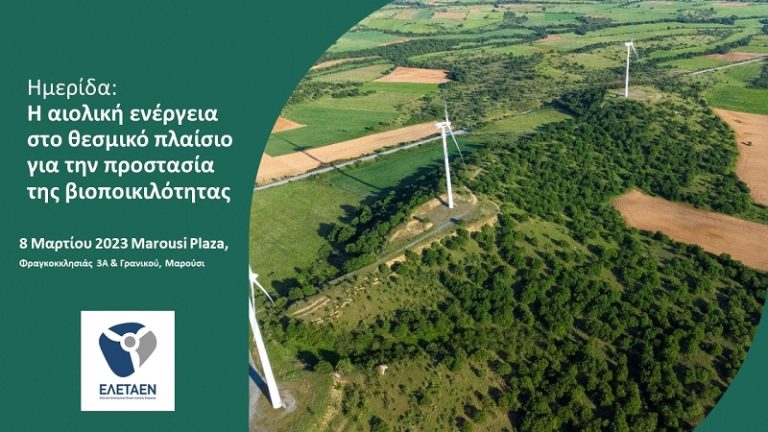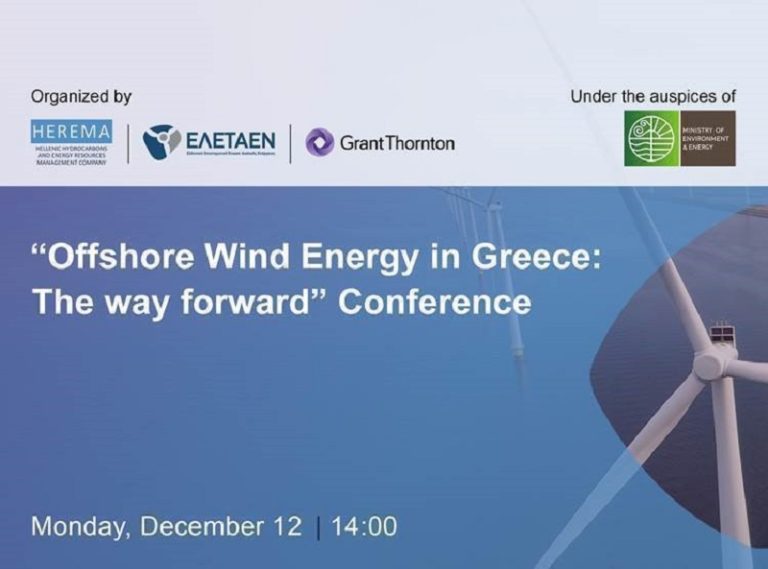Ministry’s announcement for a new law for the environmental legislation
 Athens, 3 March 2020
Athens, 3 March 2020
On 27 February 2020 the Ministry of Environment and Energy presented the analytical principles and goals of a new law for the modernization of the environmental legislation. The new law will include several chapters. At least 3 of them fall within the interest of our sector i.e.
- Simplification of environmental permits
- Simplification of RES licensing
- New organizational model for the management of the protected areas
We provide below an unofficial translation of the main points of the announcement of the Ministry.
The Greek text and the files used for the presentation (pdf and ppt) may be found at the web site of the Ministry http://www.ypeka.gr/Default.aspx?tabid=785&sni[524]=6968&language=el-GR
Issuing an environmental permit is often a painful process. While the existing legislation provides for its issuance in a few months, it can eventually take up to six to eight years. Investors are thus becoming bureaucratic and many investments are not going well. There is a similar problem with the modification and renewal procedures of the environmental permits, which account for 65% of the volume of applications being examined by the Environmental Authorities.Solution
With the new law we will simplify the process of issuing environmental terms with three actions:
1st action: Shortening the deadlines to 120 days, while also envisaging their strict adherence.
2nd action: We reduce to 3 the stages of the environmental licensing. In addition, there will be consequences for exceeding the relevant deadlines, as well as secure that the deadlines of the law are not frozen in any way. The stages will be the following:
- Stage 1 – Checking the completeness of the dossier: with the deadline expired the dossier is considered complete.
- Stage 2 – Opinions of the competent authorities: If deadlines are not being met, the opinions will be considered as positive, so the continuation of the procedure will not be hindered.
Exceptions will exist only for the substantive opinions (e.g. archaeological and forestry) which will be referred to the Central Environmental Licensing Council – KESPA (for A1 projects) and the Regional Environmental Licensing Council – PESPA (for A2 projects).
The KESPA or the PESPA will be convened within 20 days and the Head of the Directorate-General of the authority which has not delivered a timely opinion will be required to attend the meeting. This change is of enormous importance. - Stage 3 – Consolidation of the 3 stages: (i) the evaluation of the opinions and the Environmental Impact Assessment Study (EIA) (ii) the drafting of the Environmental Terms Approval (ETA or AEPO) and (iii) the issuance of the Environmental Terms Approval.As soon as a 30-day deadline has elapsed, the Secretary General of the Ministry (for A1 projects) or the Coordinator of Decentralized Administration (for A2 projects) will be required to issue the Environmental Terms Approval.
In addition, there will be a provision for the future possibility of issuing a single license, incorporating environmental conditions (one-stop-shop).
3rd action: We introduce Certified Private Evaluators in the environmental licensing process.
This is a widespread administrative practice provided for in the European Directive and already implemented in most EU countries.
In addition, it is possible for all stages of environmental licensing to be carried out by Certified Private Evaluators. These will be specialized scientists, with proven experience, registered in the Registry after certification by the Ministry.
Simplifying the process of modifying and renewing of the Environmental Terms Approvals
With this bill, we extend the duration of the Environmental Terms Approvals (i.e. the environmental permits) from 10 to 15 years.
Through a screening process – by submitting a simplified dossier – the Environmental Authority will judge which modifications are immaterial and which are substantial.
We will also define clear criteria for distinguishing between substantive and non-essential amendments (by Ministerial Decision). In the case of minor amendments, we will provide for a rapid and simplified procedure for the adoption of a Decision amending or renewing the Environmental Terms Approval.
We are still anticipating the involvement of Certified Private Evaluators.
We will provide the option of extending the ETA’s validity period for projects or activities with EMAS or ISO.
Upgrading of Electronic Environmental Registry
Another major reform is the modernization and enhancement of the Electronic Environmental Registry to carry out all stages of environmental licensing electronically.
2. Simplification of RES licensing
Licensing for RES projects lasts 3-4 years for photovoltaics and 6-8 years for wind. Only for the Production License, the first stage of the process, it takes 18-24 months for it to be issued by RAE (by plenary decision).Currently more than 1,800 applications (approximately 29 GW) are pending before the Regulatory Authority, and applications submitted since 2018 are still being evaluated. Today, 29 steps are required from the Production License to the Offtake contract with DAPEEP. The room for simplification and acceleration is huge!
The solution
Our interventions reduce the licensing time. We will replace the Production License with the Electricity Producer’s Certificate. The RAE’s Plenary Assembly will not be required to issue any decision. The new licensing framework will cover both new applications and pending applications for Production Licenses, so that pending applications can be cleared within a few months. We expect immediately visible results in Certificates’ issuance times (less than 6 months).
We will introduce the new process with a dedicated Information System. The Electronic Renewable Energy Registry will be created to support the new licensing process. It will communicate with the information systems of other stakeholders (e.g. environmental authorities) and the Grid and System Operators (HEDNO, ADMIE). Up to its implementation, the existing RAE’s Information System will be used and upgraded to clear pending applications faster.
In addition, we abolish from 1.1.2020 the obligation to pay the annual Production License Maintenance Fee. Hereinafter, we impose a special fee (in Euro/MW) for the issuance of the Certificate, to be paid once in favor of the RES Special Account.
There will be specific milestones for Certificate’s holders so that they “lose” their right if they do not mature their project. This intervention accompanies and operates in parallel to the simplification in environmental licensing. More interventions in the second phase of the process until the Offtake contract, will follow. The goal is to reduce the time for licensing of the renewable energy investments to 2 years by the end of 2021 (+1 for exceptional circumstances) as pe the Directive 2018/2001.
The existing organizational model of Management Agencies of the Protected Areas with dozens of boards and incomplete management structures despite all the generous efforts made cannot meet the needs of an integrated and sustainable management of the Protected Areas. Most of the existing 36 Agencies have major administrative and management deficiencies. Many Agencies are not operating properly, and 8 Agencies set up in 2018 exist only on paper!The Solution
We are creating the Organization for the Environment and Climate Change (OFFEKKA) – supervised by the Ministry- which will operate, develop policy, coordinate its implementation and manage the increased funding for the protected areas. The Organization will immediately enter into Memoranda of Understanding with the Decentralized Administrations for the protection of the areas. In addition, the Organization will conclude strategic partnerships with the Regions and Municipalities for the implementation of projects and development programs. Regions and Municipalities will be funded accordingly.
The 36 Management Boards of the existing Agencies are abolished. 24 decentralized units will be created within the new Organization for the supervision, scientific monitoring and promotion of the protected areas. The number of these units (24) corresponds to the number of the Management Plans developed for these areas. Within each of the 24 units there will be a special committee with the participation of representatives of the scientific community, environmental organizations and local authorities and will make a substantial contribution to the protection policy of the areas.
The new General Directors and Directors will be recruited through an evaluation based on the criteria foreseen in the relevant legislation. The staffing base of the 24 units will be the today’s civil servants following an assessment.
The creation of a single organization for the management of the Protected Areas has been a constant demand of bodies, ecological organizations and boards of the existing management agencies.
You may see the note in PDF HERE


